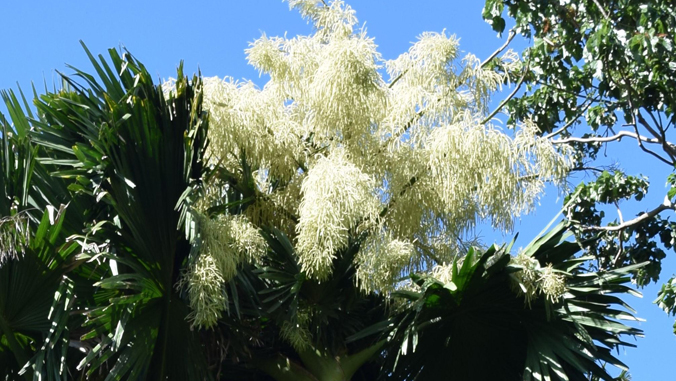


A once-in-a-lifetime event is on display at the Lyon Arboretum in Mānoa Valley.
The talipot palm is blooming. Talipot palms flower only once and can do so from when they are 30 to 80 years old. The one currently in bloom at the arboretum is 55 years old and was acquired from Foster Botanical Garden in 1962.
The flower is actually a flowering stem, known as an inflorescence, made up of a million tiny flowers. The talipot palm is monocarpic, meaning it will die after it blooms and fruits.
Native to India and Sri Lanka, the talipot has the largest inflorescence in the world at an average of up to 26 feet (8 meters) tall. The leaves are also impressive, spanning up to 16 feet (5 meters) wide.
Lyon Arboretum’s talipot is estimated to be about 70 feet (21 meters) from its base to the bottom of the inflorescence. The inflorescence itself is about 18 feet (5.5 meters).
One interesting fact is that talipot leaves were used in ancient India to write on for religious documents. The writing was done using an iron stylus that cuts into the cuticle of the leaf, leaving the lettering behind.
The bloom typically lasts at least several weeks.
Catch the bloom
Lyon Arboretum, a research unit of the University of Hawaiʻi at Mānoa, is open to the public Mondays–Fridays from 8 a.m. to 4 p.m., and Saturdays from 9 a.m. to 3 p.m. The arboretum is closed on Sundays and holidays.
Upon arrival, visitors are advised to sign in at the visitor center and pick up a special informational brochure and map to the talipot.

